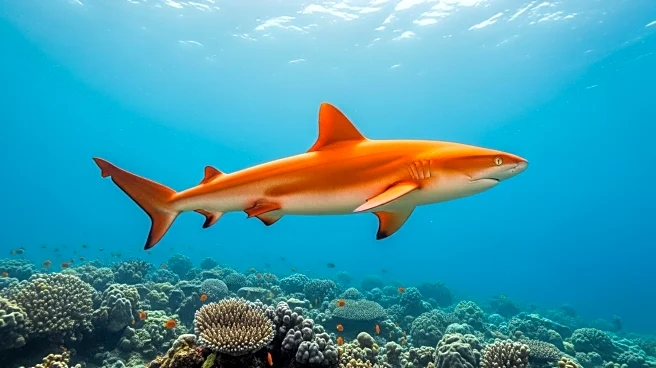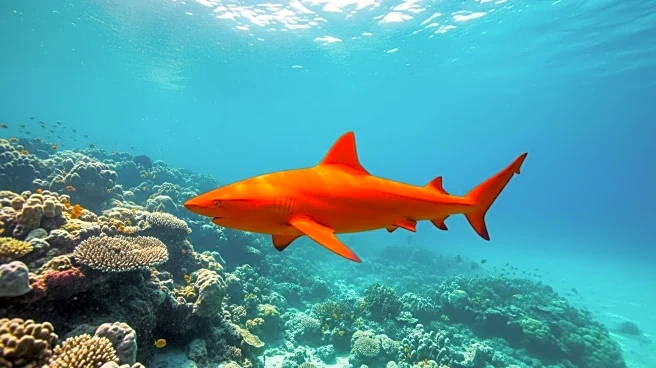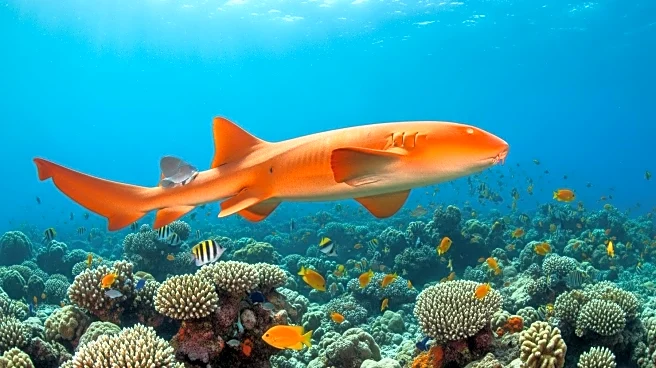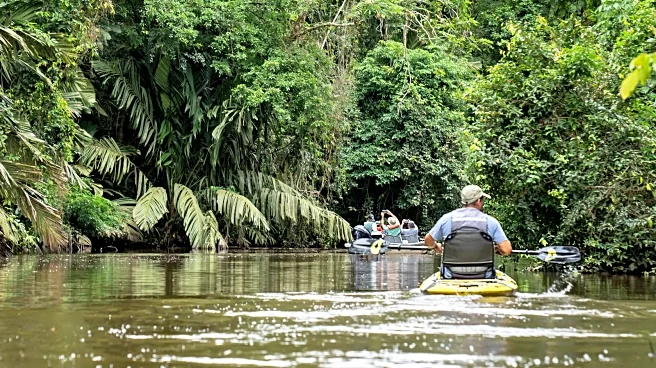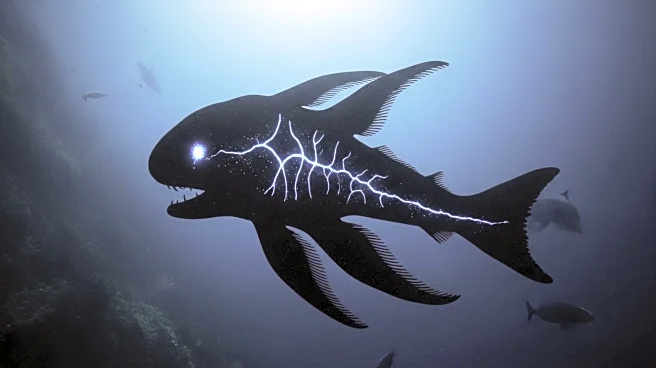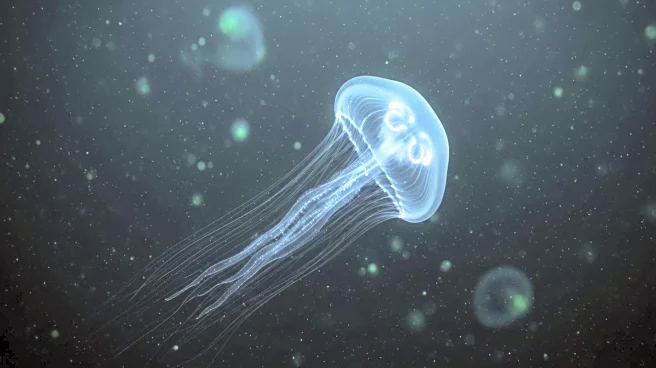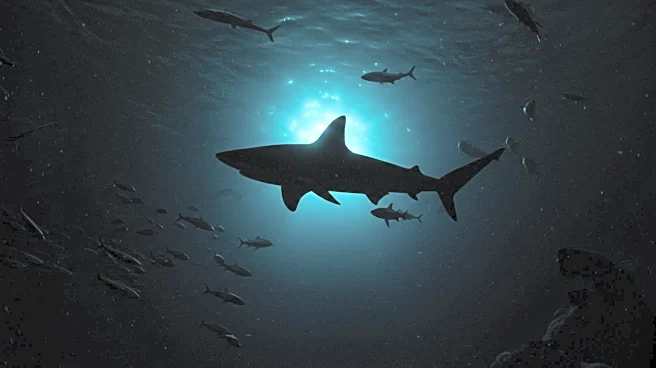What is the story about?
What's Happening?
Scientists have discovered a unique bright orange nurse shark in Costa Rica's Tortuguero National Park. The shark's unusual pigmentation is attributed to two rare genetic conditions: xanthism, which reduces darker pigmentation, and albinism, which affects melanin production. This combination results in the shark's striking orange color and white eyes. The discovery, documented in the Marine Biodiversity journal, marks the first recorded instance of an orange shark, highlighting the rarity of such genetic variations in marine predators.
Why It's Important?
The discovery of the orange shark provides valuable insights into genetic diversity and adaptation in marine species. Understanding these genetic conditions can enhance knowledge of biodiversity and evolutionary processes, potentially influencing conservation strategies for marine life. The shark's survival despite its lack of camouflage suggests resilience and adaptability, offering lessons for studying genetic mutations and their impact on species survival.
What's Next?
Further research may explore the environmental factors contributing to the shark's pigmentation, such as inbreeding, stress, and hormonal imbalances. Scientists may investigate similar genetic conditions in other marine species, expanding understanding of genetic diversity and adaptation in the ocean.
Beyond the Headlines
The discovery of the orange shark highlights the intersection of genetics and environmental factors in shaping biodiversity. It underscores the importance of preserving diverse ecosystems to support unique genetic variations and adaptations.
AI Generated Content
Do you find this article useful?
